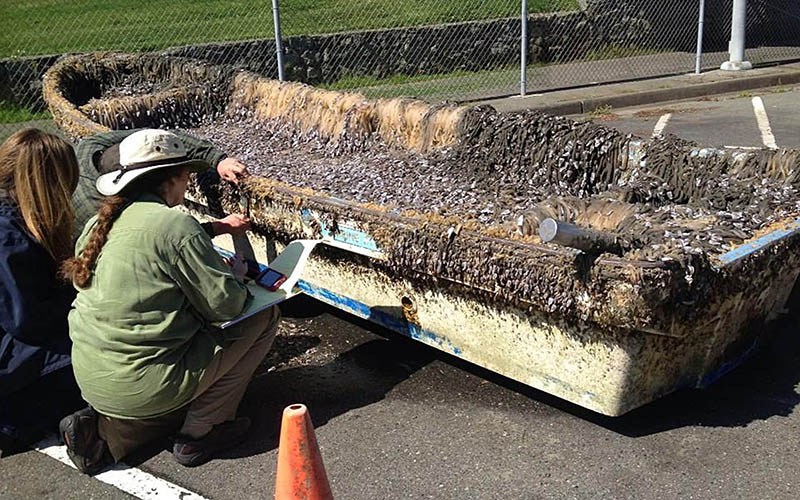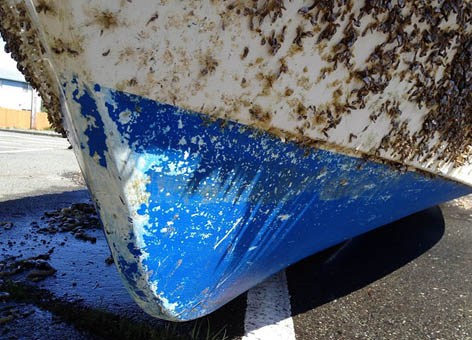
Japan Tsunami Debris Confirmed in California

A small skiff recently washed ashore near Crescent City, Calif. But this was no ordinary ship — it floated there all the way from Japan, dislodged from its native land more than 25 months ago by a monster tsunami, government scientists have confirmed.
It's the first confirmed piece of debris to wash up in the state of California from the Tōhoku earthquake and tsunami that hit Japan on March 11, 2011, according to the National Oceanic and Atmospheric Administration (NOAA).
The Coast Guard and local sheriff's office removed the ship after it was spotted, and staff at Humboldt State University in northwestern California helped translate the Japanese writing on the boat. Officials then traced the boat to Takata High School, located in Japan's Iwate prefecture, an area devastated by the tsunami, NOAA reported.

The 20-foot (6 meters) skiff was covered in gooseneck barnacles, a common type of filter feeder that makes itself at home on stuff that floats in the open ocean. It wasn't immediately clear whether this boat carried invasive species, which had been seen with other pieces of Japanese tsunami debris that have washed up on the West Coast.
One ship that recently washed onto the shore in Long Beach, Wash., for example, contained an estimated 30 to 50 species of plants and animals, including potential invasive species. In a sealed compartment in the back of that ship, scientists found five live striped beakfish — “a species native to coral reefs mainly in Japanese waters [and] sometimes found in Hawaii, but certainly not in the cold waters of the Pacific Northwest coast," NOAA reported.
To date, 26 other pieces of Japanese debris have washed up in Oregon, Washington, Hawaii, Alaska and British Columbia.
The tsunami dragged some 5 million tons of debris into the Pacific Ocean, according to Japanese government estimates. Much of it likely sunk shortly thereafter, but about 1.5 million tons floated away from Japan's coast, and this tsunami debris is still washing up far afield.
Sign up for the Live Science daily newsletter now
Get the world’s most fascinating discoveries delivered straight to your inbox.
Email Douglas Main or follow him @Douglas_Main. Follow us @OAPlanet, Facebook or Google+. Original article on LiveScience's OurAmazingPlanet.










